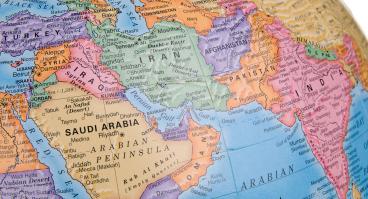White Elephants on Quicksand: Low Oil Prices and High Geopolitical Risk

Table of Contents
Author(s)
Hany Abdel-Latif
Lecturer, Swansea UniversityMahmoud A. El-Gamal
Baker Institute Rice Faculty Scholar | Chair in Islamic Economics, Finance and ManagementShare this Publication
- Download PDF
- Print This Publication
- Cite This Publication Copy Citation
Abdel-Latif H, El-Gamal M. White elephants on quicksand: Low oil prices and high geopolitical risk. Scott J Polit Econ. 2022; 69: 60–107, (https://doi.org/10.1111/sjpe.12279).
Abstract
This paper investigates the effects of low oil prices and heightened geopolitical risks on economic growth and investment in the Middle East and North African (MENA) countries. We employ a Global Vector Autoregression (GVAR) model with 53 countries, including 15 MENA countries, over the period 1979Q2-2017Q2. We impose sign restrictions on the impulse response functions (IRFs) to identify two types of negative oil price shocks, resulting from demand or supply changes, as well as geopolitical risks. Moreover, we estimate a set of nonlinear local projection IRFs, which allow for a regime change, high vs. low, in oil price and geopolitical risk levels. We find that negative shocks to oil prices and positive shocks to geopolitical risk have adverse effects on GDP and investments in MENA countries. Moreover, we find that a simultaneous incidence of (i) positive shock to country-level investment together, (ii) a negative shock to oil price and (iii) positive shock to geopolitical risk has statistically insignificant effects on country-specific economic growth. Finally, we find that the impact of investment on GDP in MENA countries is muted when oil prices are low and/or geopolitical risk level is high. These findings cast doubts on the prospects of mega-project economic transformation plans as envisioned in 2030 visions for several MENA countries.


